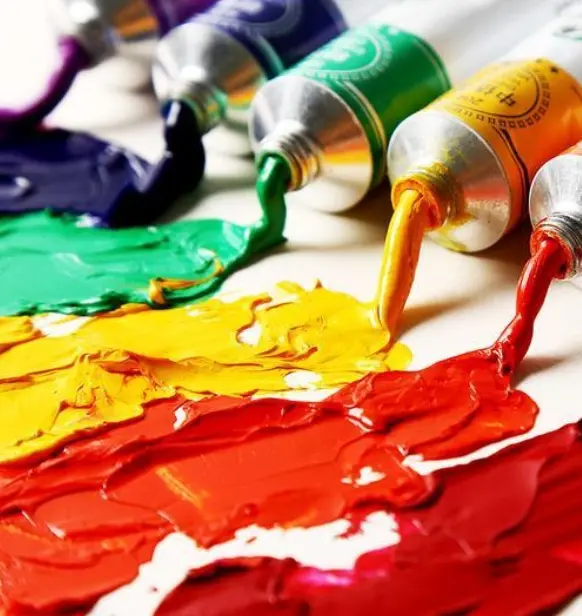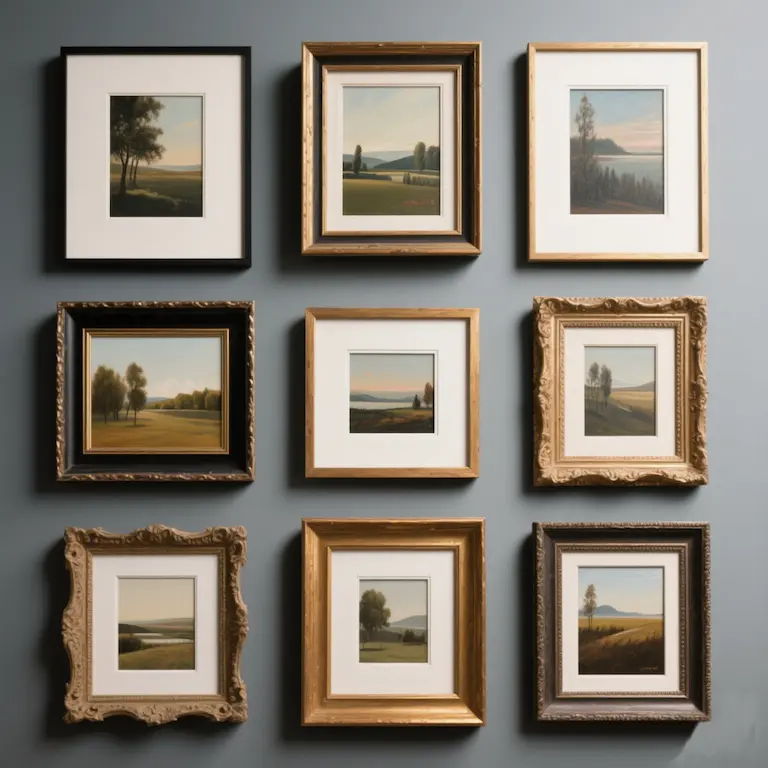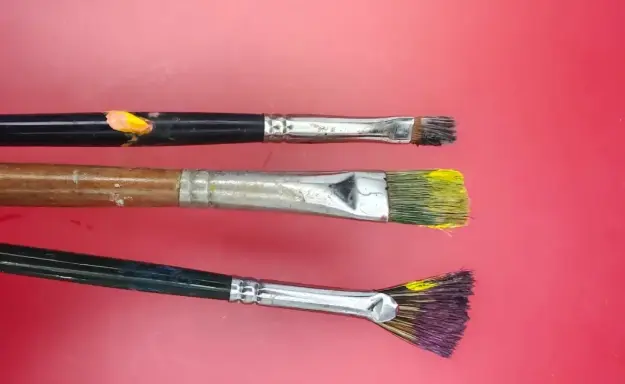The Renaissance (from the end of the 14th century to the beginning of the 17th century) was an important stage in European history, when the field of art underwent unprecedented change and development. During this period, the art of oil painting gradually matured and reached its peak, and artists broke free from the constraints of the Middle Ages, ushering in a new era of human-centered art. In this report, we will systematically sort out the famous oil paintings of the Renaissance, and discuss the characteristics, technical innovations and historical significance of these masterpieces of art.
Background to the development of Renaissance oil painting
The Renaissance was an important stage in Europe’s transition from the Middle Ages to modern times, when artistic creation gradually expanded from religious to humanistic themes, and the status of artists was elevated from artisans to the intellectual class. During this period, oil painting techniques gradually matured, and artists began to use techniques such as focal perspective and contrast of light and dark to represent three-dimensional space and the human figure.
Innovations in Oil Painting Materials
Famous Renaissance oil paintings materials and techniques matured. Artists in the northern Low Countries of the fifteenth century began to paint with light, translucent oil paints, a new material that allowed them to depict real-world details with greater precision and jewel-like, brilliant colors. This technological innovation provided important support for the expressive power of Renaissance oil painting.
Transformation of Artistic Philosophy
During the Renaissance, artists were no longer satisfied with inheriting the creative patterns of their predecessors, and began to take an interest in the realities of their surroundings, observing the scenes that occurred around them with a new eye. This shift in artistic philosophy made Renaissance oil painting pay more attention to the observation and reproduction of reality.
Oil Painting by the Three Renaissance Masters
During the Renaissance, three masters emerged in Italy – Leonardo da Vinci, Michelangelo and Raphael, who were known as the “Three Masters of the Renaissance” and made outstanding contributions to the development of the art of oil painting.
Leonardo da Vinci’s Oil Painting Techniques
Leonardo da Vinci is an outstanding representative of the Italian Renaissance movement, and his masterpiece The Last Supper is a representative masterpiece of the early Renaissance. Da Vinci’s portrayal of character, spatial expression, depiction of light and shadow, reproduction of landscape, and narrative ability all represent the highest achievement achieved by Renaissance painting.
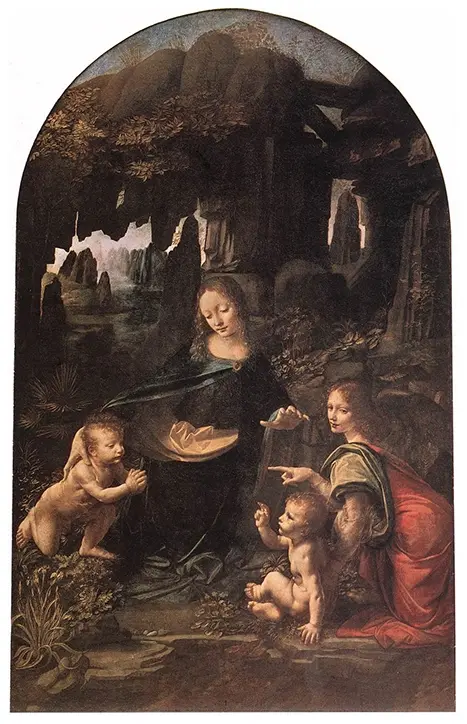
Da Vinci’s perfect painting technique has always been infinitely fascinating. The transition of his tones and colors from light to dark levels is so fine as to be imperceptible. Light and image blend into each other like smoke, and brushstrokes and contour lines are naturally imperceptible. Da Vinci was particularly adept at combining artistic creation with scientific exploration, which is unique in the world’s art history.
Da Vinci’s representative oil paintings include Mona Lisa and The Last Supper. His works have always been characterized by a distinctive personal style, and his insights into art have deeply influenced future generations of artists.
Michelangelo’s Oil Paintings
Michelangelo was a famous Italian painter, sculptor and architect during the Renaissance. His oil paintings, such as The Last Judgment and The Creation of Adam, demonstrate his precise mastery of the human body and his deep understanding of religious themes.
Michelangelo’s The Prophet is one of the important oil paintings of the Renaissance, showing his masterful portrayal of the human figure and his unique interpretation of religious themes. Michelangelo’s painting style is characterized by majestic and powerful figures and strong emotional expression, and his in-depth study of the structure of the human body makes his works of great artistic value.
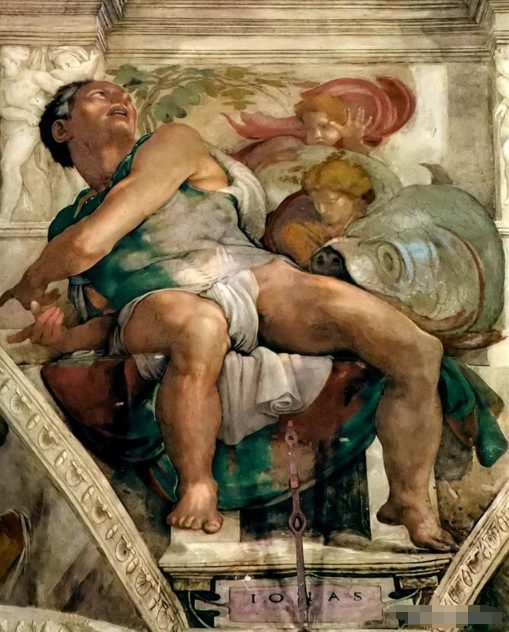
Raphael’s Oil Painting
Raphael was a famous Italian painter and architect during the Renaissance, together with Leonardo da Vinci and Michelangelo, he was known as the “Three Masters of the Renaissance”. His oil paintings are mainly in the series of Madonna paintings, and his masterpieces include the oil painting “Sistine Madonna” and the fresco “Academy of Athens”.
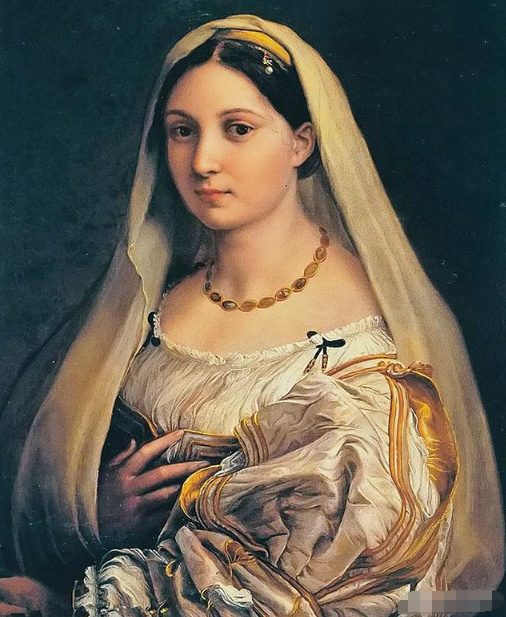
Raphael’s Madonna and Child with St. John the Baptist (Our Lady of Gava) is one of the classic oil paintings of the Renaissance. In this work, Raphael presents an absolutely harmonious visual effect through the geometric structure of triangular composition, which makes these icons and the background perfectly combined, creating a deep sense of tranquility, and at the same time, inspires the viewers to find the inner resonance and harmony in the appreciation.
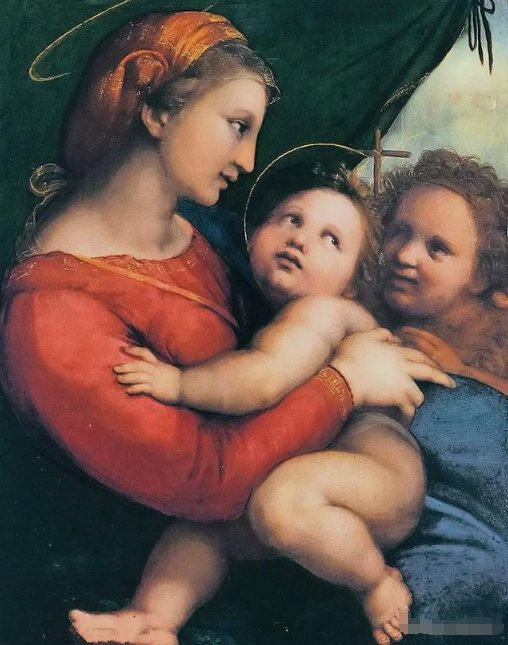
Raphael’s oil paintings had a profound influence on later artists, and Rococo art drew inspiration from the elegance of Raphael’s figures. His works are known for their elegance, harmony and perfection, demonstrating the pinnacle of Renaissance art.
Other Important Renaissance Oil Painting Artists
In addition to the “Three Renaissance Masters”, there were many other important oil painting artists during the Renaissance, whose works also made important contributions to the development of oil painting.
Botticelli’s Oil Painting
Sandro Botticelli was an important representative of the Florentine school of painting during the Renaissance. His oil paintings, such as The Birth of Venus and Spring, demonstrate his unique interpretation of mythological and religious themes.
Although Botticelli’s The Three Miracles of St. Zenobius is small in size and religious in theme, its compositional ideas, scene presentation and narrative style all reflect the awakening of humanistic consciousness and “Neo-Platonism” at that time, which believed that people should first learn to know themselves. In this work, Botticelli skillfully sets the three storylines in the same scene, and unifies the three shrines in a single image through geospatial consistency.
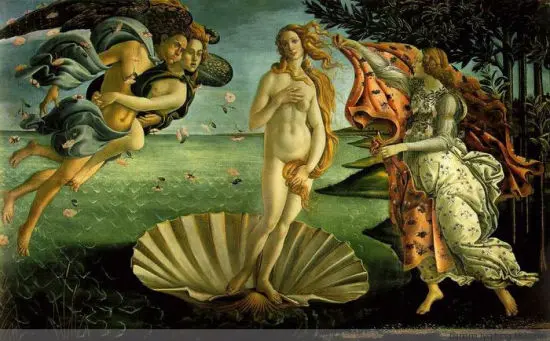
Botticelli utilized the new painting methods of the fifteenth century and developed the decorative styles of the Middle Ages, creating a unique style of painting rich in the rhythm of lines and delicate clarity. His works had a significant impact on the development of Renaissance oil painting art.
The Oil Painting Art of Giovanni Bellini
Giovanni Bellini is the founder of the Venetian school of painting, and his oil paintings, such as the Madonna and Child, show the unique style of the Venetian school of painting.
In Bellini’s Madonna and Child, the Madonna and Child are separated by a green “cloth of honor” from the landscape behind them, and separated from the audience by a low marble wall in front of them, thus highlighting their remote divinity. However, the gentle gesture of the Virgin and Child gives a sense of their approachability [17]. This work is often referred to as the “Madonna with Pomegranate”, the pomegranate symbolizing the crucifixion of Jesus. Interestingly, the green color of the Madonna’s cloak is derived from lapis lazuli, an extremely expensive pigment. The wealth of the commissioner is therefore evident in the pigments used for the painting.
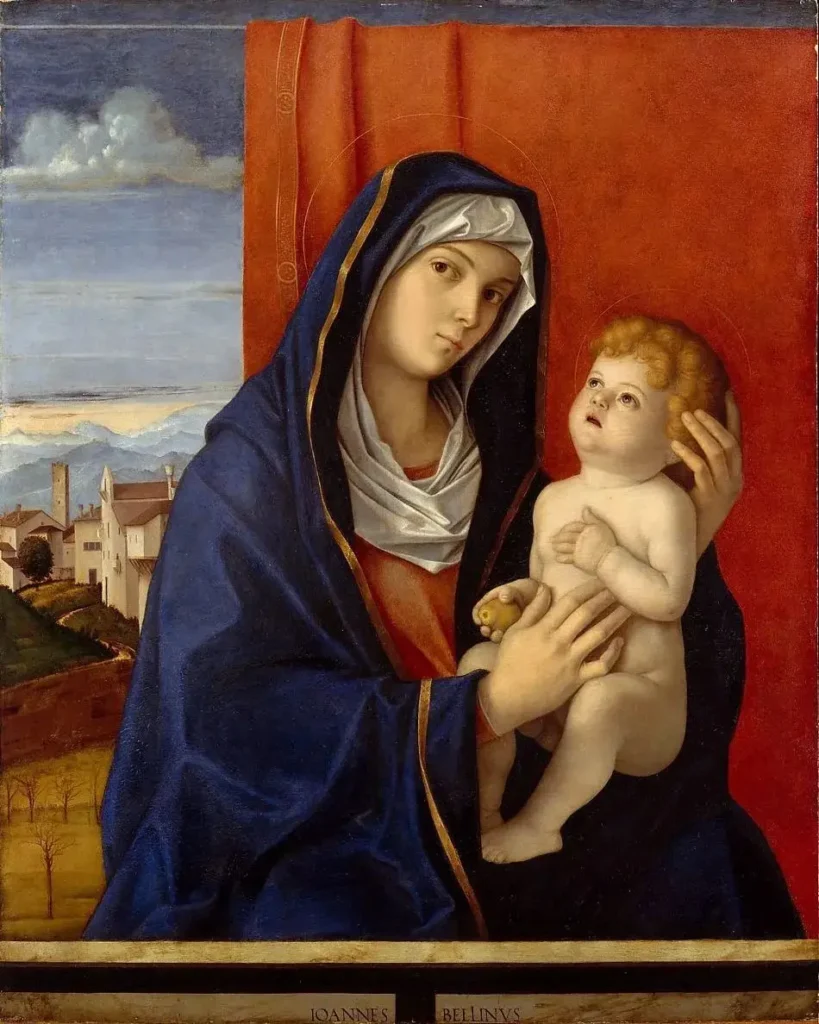
Titian’s Oil Painting
Titian was a representative painter of the Venetian School of the late Italian Renaissance. His oil paintings, such as Portrait of a Woman, demonstrate his unique understanding of the human figure and portraiture.
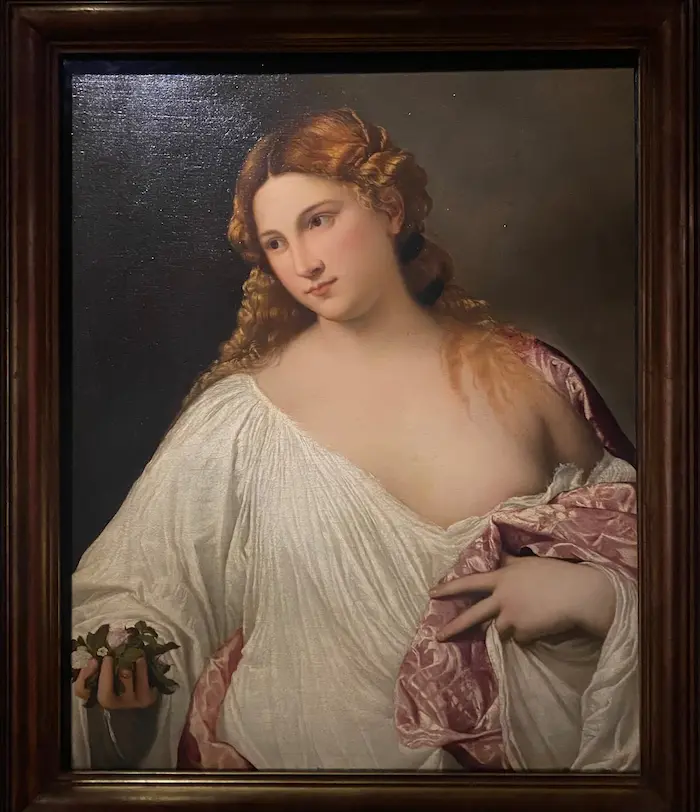
In Titian’s Portrait of a Woman, Titian pioneered portraiture, setting a new standard for the female figure and portraiture full of confidence, power, and monumentality. The side portraits in the painting are influenced by ancient Roman reliefs, the of the woman is intuitive and vivid, the side portrait on the stone looks ancient and distant, the two different portrait styles show Titian’s great artistic skill.
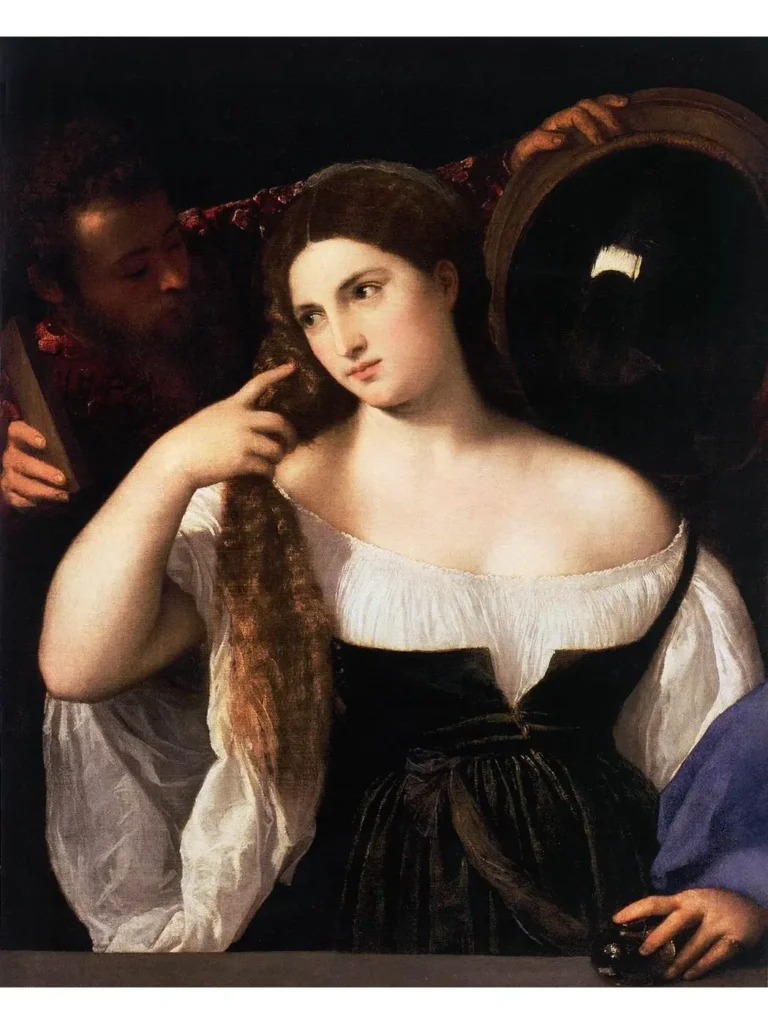
Titian studied in the studio of Giovanni Bellini, whose works made an important contribution to the development of Renaissance painting.
The Art of Oil Painting by Antonello da Messina
Antonello da Messina was an important painter in Italy during the Renaissance. His oil paintings, such as St. Jerome in the Study, show his masterful portrayal of interior scenes and figures.
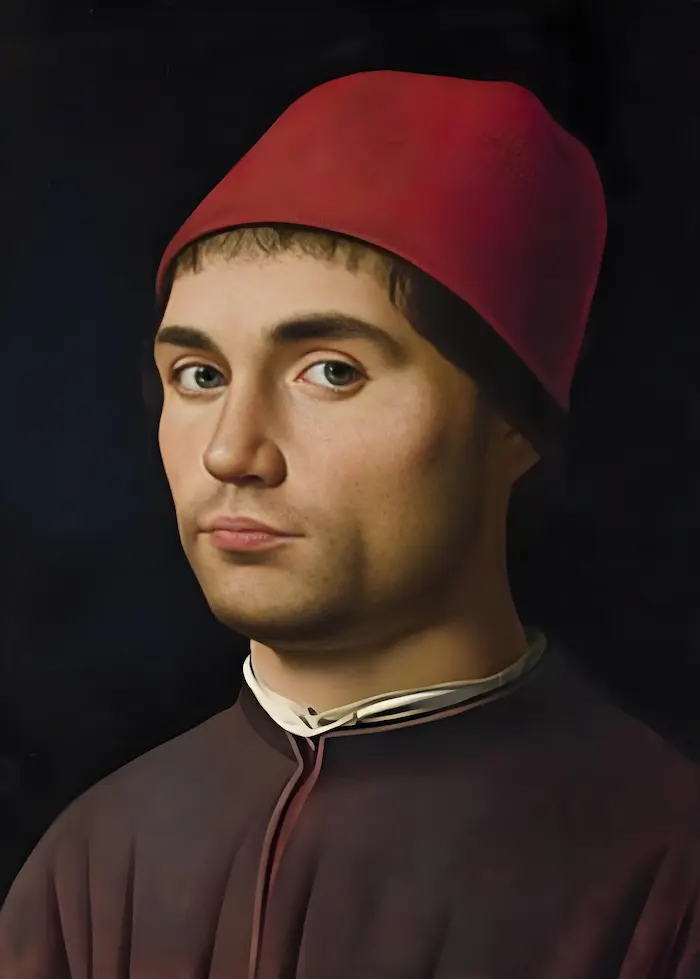
In St. Jerome in the Study, St. Jerome is sitting and reading quietly in the study, which was the most advanced study in the fifteenth century. Fitted with built-in bookshelves and desks, and elevated by integrated steps to the overall structure. Historical archives indicate that Lorenzo de’ Medici (1449-1492) most likely had a similar study. It is a Renaissance classic in linear perspective. The study space is square, with the viewer’s horizon at the center line of the square, and the extension lines of the floor tiles, the arcade, the study, and the desk all disappearing into the “point of extinction” at the center of the picture.
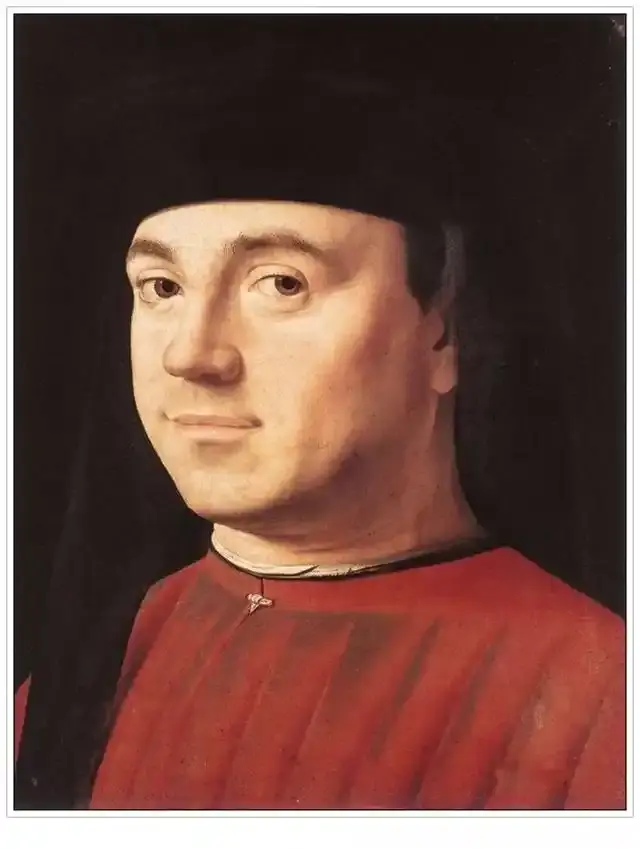
Oil Painting by Quentin Mathis
Quentin Mathis was an important representative of the Northern Renaissance during the Renaissance period, and his oil paintings, such as The Madonna and Child on the Throne and the Four Angels, demonstrate his unique interpretation of religious themes.
In The Virgin and Child on the Throne and Four Angels, the Virgin Mary sits on a golden throne, with two angels hovering above her head holding delicate crowns, preparing to crown her, and two angels of music standing on either side of the golden throne, playing the lute and the harp respectively. The decoration of the golden throne resembles the interior of a Scandinavian Gothic cathedral, and the elaborate and intricate floral decorations and gold paint behind the figures make the picture extraordinarily ornate, showing the splendor of a medieval Gothic church.
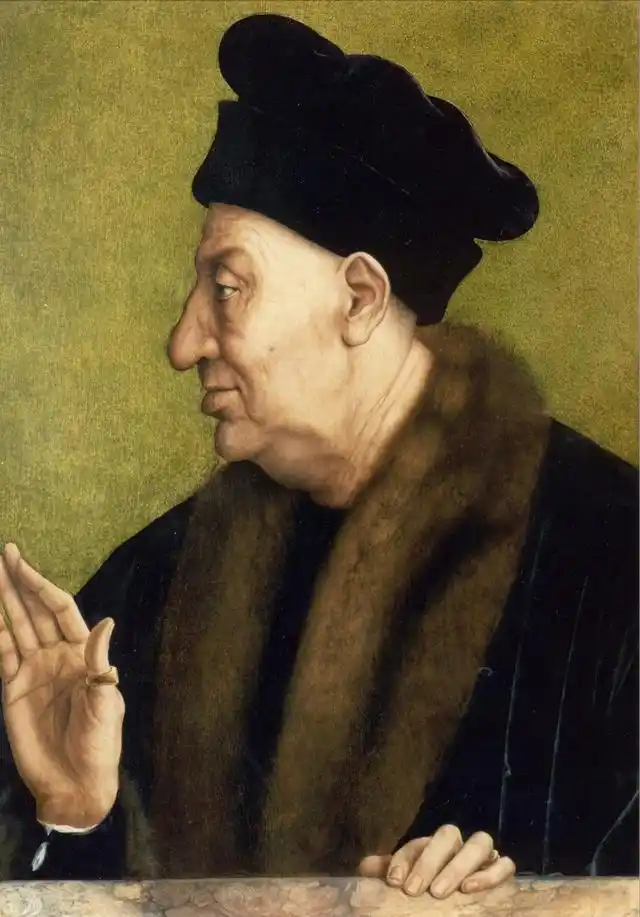
The Oil Painting Art of Jan Gosset
Jan Gosset was an important representative of the Northern Renaissance during the Renaissance period, and his oil paintings, such as The Young Princess, show his unique understanding of the human figure and portraiture.
In The Young Princess, the little girl in the painting is probably Dorothea, the daughter of the exiled King Christian II of Denmark. She is holding an armillary sphere in her hand, with the index finger of her right hand pointing to a position about 55 degrees north of the equator on the outer ring, referring to her father’s kingdom, while the upside-down position of the armillary sphere alludes to a change of regime. The upside-down armillary sphere alludes to her father’s lost kingdom.
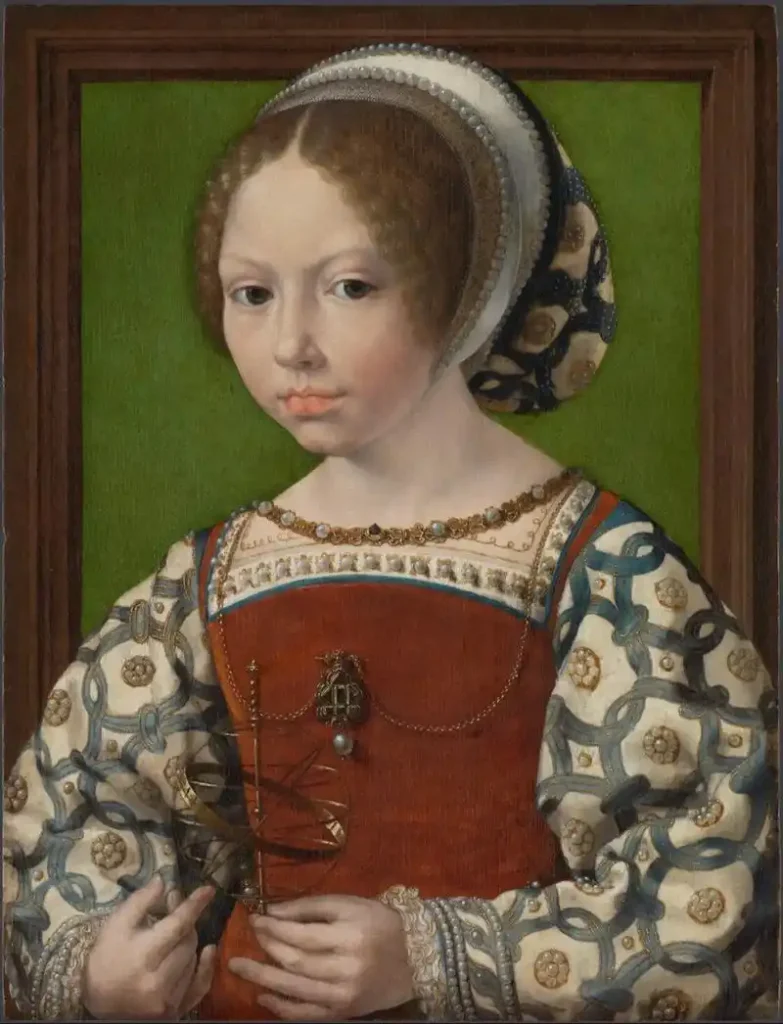
Joachim Buclair’s oil paintings
Joachim Buclair was an important representative of the Northern Renaissance during the Renaissance period, and his oil paintings, such as The Four Elements: fire, demonstrate his unique understanding of everyday life scenes and narrative painting.
In The Four Elements: Fire, Bouclair depicts a well-stocked kitchen. Pots and pans are thrown haphazardly on the brick floor, and every available surface seems to be piled high with produce. Four maids are engaged in cooking preparations, while a young man sits on a stool in front of the stove, gulping something from a clay pot. The combination of close-ups of modern scenes with distant views of biblical themes demonstrates Buclair’s unique artistic style.
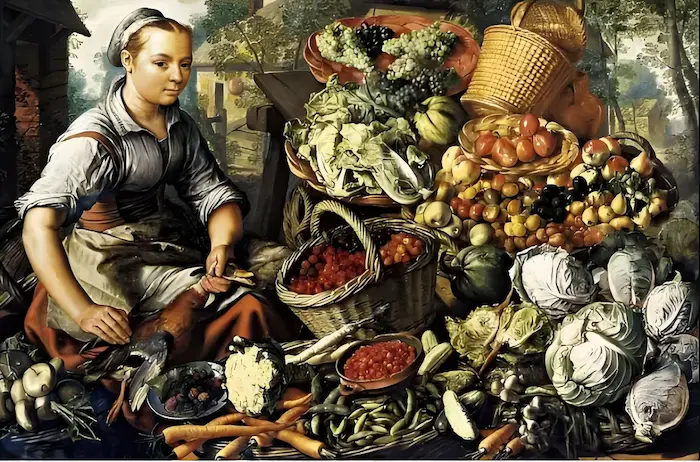
Innovations in Renaissance Oil Painting Techniques
During the Renaissance, oil painting techniques underwent important innovations and developments that allowed artists to more accurately represent three-dimensional space and the human figure.
Linear Perspective
Brunelleschi was the inventor of geometric perspective (linear perspective). Perspective is an important scientific discovery of the Renaissance. It witnessed the process of human visual experience from perceptual to rational understanding, and provided a method for human beings to understand and represent the world.
By the height of the Renaissance, artists used perspective to organize the picture, no longer confined to the plane to express the depth and realism of three-dimensional space, most painters pursued the beauty of rigorous structural form, so that the picture produces a calm, stable effect, tending to simplify the perfect realm, adapted to the aesthetic interest of the Classical period.
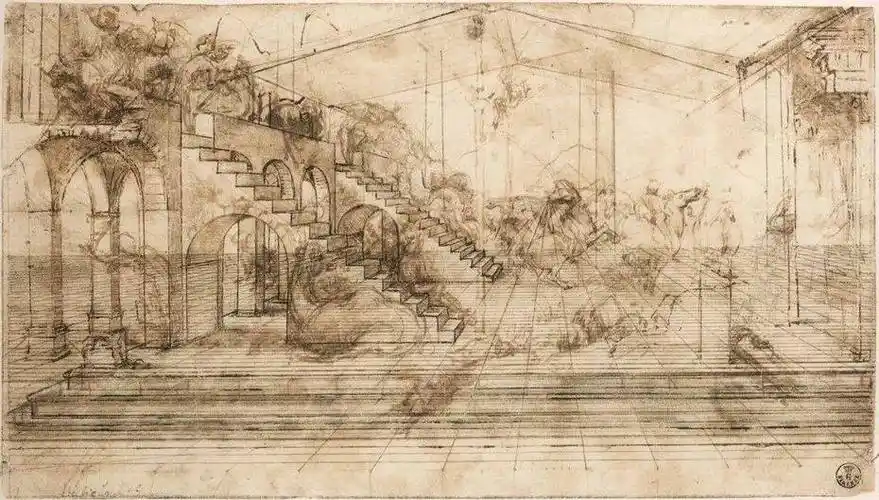
For example, Leonardo da Vinci’s “The Last Supper” adopts the “focal point perspective”, in which the horizontal table, window and the two sides of the wall and ceiling become perpendicular, and due to the principle of perspective, all the right-angled perpendicular surfaces in the picture are processed into tilted surfaces, and all the perpendicular right-angled lines with the window surface eventually disappear at one point.
Air Perspective
Leonardo da Vinci believed that linear perspective was only geometric optics and was not sufficient to account for the fact that objects would become blurred and colors would fade at a distance. Da Vinci observed that the colors and tones of objects farther away from the viewer would change due to the air medium in nature, thus the need to use air perspective to make up for the inadequacy of linear perspective.
According to the law of air perspective, the object’s color light must pass through the air or fog as a medium to reach our point of view, with the object and the point of view of the changes in the distance, will produce the same object of the inherent color color of the color of the strength of the changes: the closer the object from the point of view, the more clear the hue, the color of the more intense, the color contrast is also the more powerful; object from the point of view of the further away, the more fuzzy the hue, the color of the concentration of the more low, the color of the contrast is also the weaker. The farther the object is from the point of view, the blurrier the hue, the lower the color intensity, and the weaker the contrast.
Eventually he invented the sfumato method to depict the continuous transition from light to dark from foreground to background objects. Da Vinci’s tones and colors transition from light to dark levels so finely that they are imperceptible. Light and image smoke-like blend into each other, and brushstrokes and contour lines are naturally imperceptible.
The study of human anatomy
Renaissance artists studied human anatomy in depth, which allowed them to represent the figure more accurately. Da Vinci’s study of human anatomy was particularly prominent, and his anatomical notes provided important support for his art.
Da Vinci had many notes in which he constantly debated with others about what to debate. From Greece to the Renaissance there was the same idea of dividing art into two categories, one called free art and another called mechanical art [48]. Da Vinci’s artistic creation was closely integrated with scientific research, and this unique artistic concept made his works deeply philosophical and scientific.
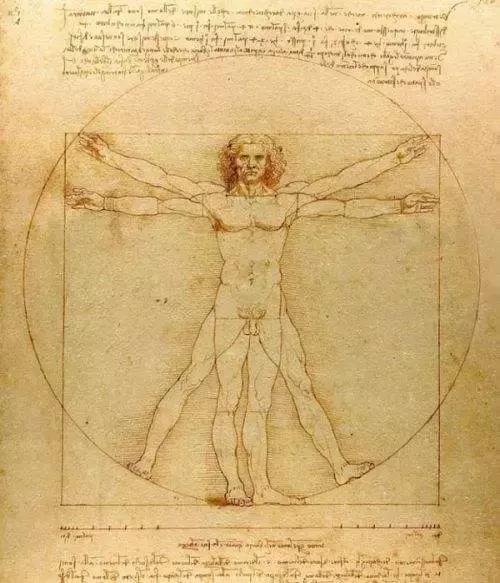
Sfumato
Leonardo da Vinci developed a technique called “Sfumato”, which creates a hazy effect through the soft transition of colors. This technique makes figures and scenes softer and more natural, and enhances the three-dimensionality and spatiality of the picture.
Da Vinci’s perfect painting technique has always had infinite charm. The transition of his tones and colors from light to dark levels is so fine as to be imperceptible. Light and images blend into each other like smoke, and brushstrokes and contour lines are naturally imperceptible. This technique gives his work a unique charm and depth.
Themes and Content of Renaissance Paintings
Renaissance oil paintings cover a rich variety of themes and contents, from religious to secular themes, from portraits to landscapes, showing the diversity of social life and artistic aesthetics in the Renaissance.
Religious Themes
Religious themes played an important role in the oil paintings of the Renaissance. Many ancient masterpieces of art related to religion are basically works of the Renaissance in the 14th-16th centuries AD. Religious themes were centered around the Bible, including statues of the Virgin Mary, statues of saints, and religious stories.
During the Renaissance, the main role of oil paintings was to decorate and beautify the environment of churches; therefore, religious and mythological themes were the subjects of oil paintings that all artists had to pay attention to. Michelangelo’s The Last Judgment and Da Vinci’s The Last Supper are classic oil paintings with religious themes.
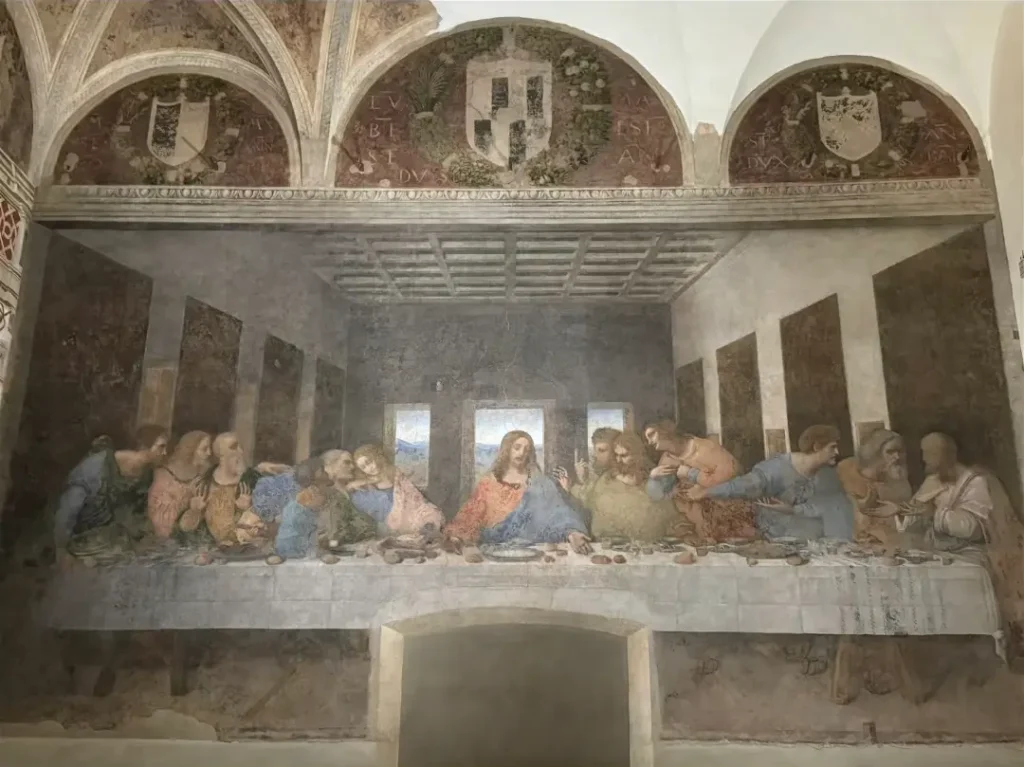
Mythological themes
Mythological themes also played an important role in Renaissance oil paintings. Botticelli’s Birth of Venus and Spring are representative works based on Greek mythology. These works expressed humanist ideas through mythological stories, reflecting the rediscovery of classical culture and the importance of the Renaissance.
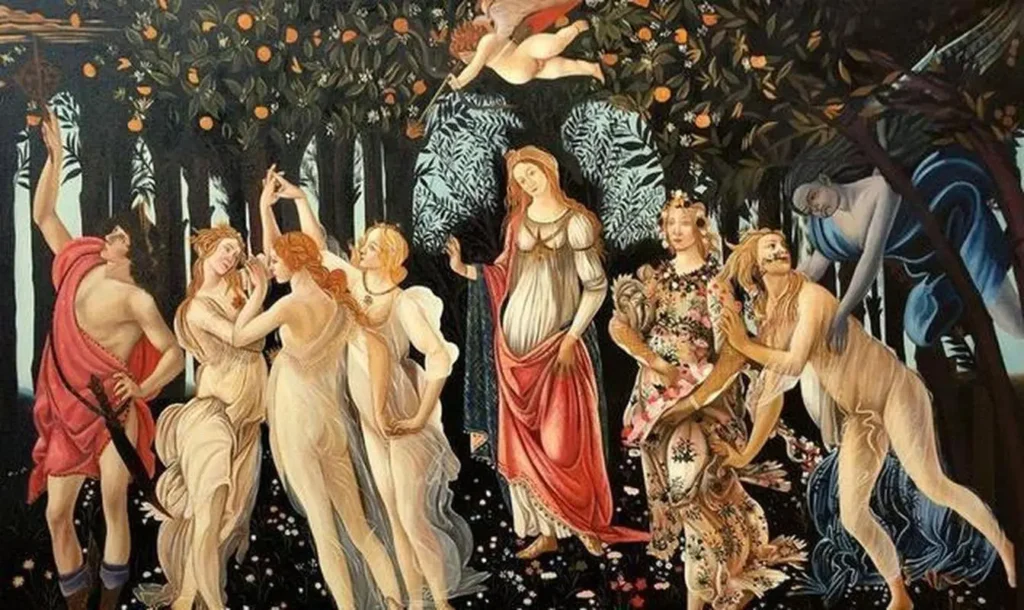
Secular Themes
With the development of humanist thought, Renaissance oil paintings began to focus on secular life and human figures. Works such as Jan van Eyck’s Portrait of Mr. and Mrs. Arnolfini are representative of real-life themes. By depicting real-life scenes and characters, these works expressed concern for real life and exploration of human nature.
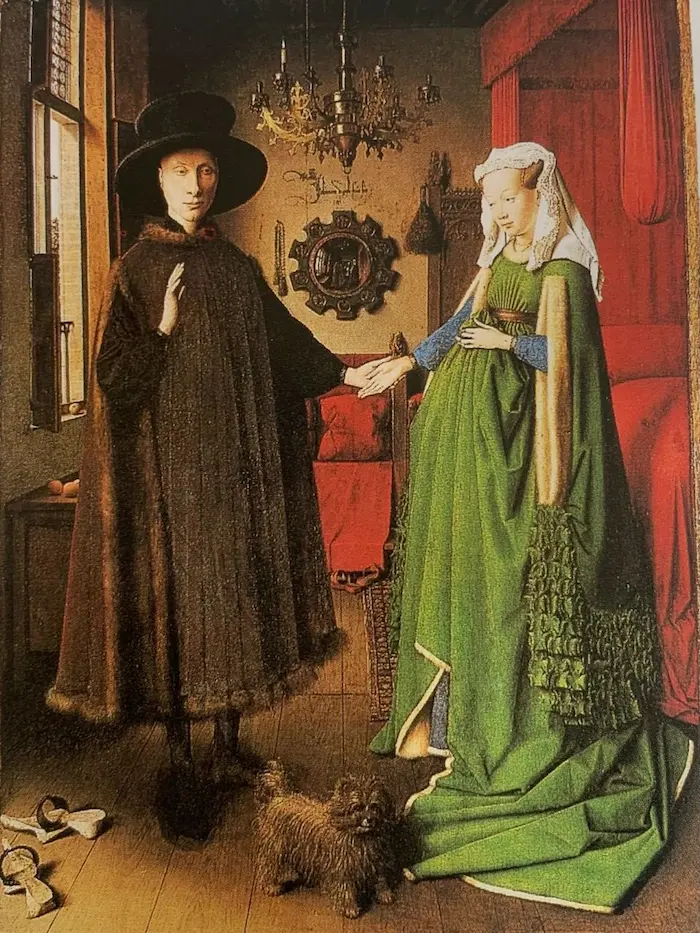
Portrait Painting
Portraits also played an important role in Renaissance oil paintings. Titian’s Portrait of a Woman and other works are representative of portrait painting. By depicting the external features and inner world of the characters, these works show the importance of the Renaissance to the value of the individual.
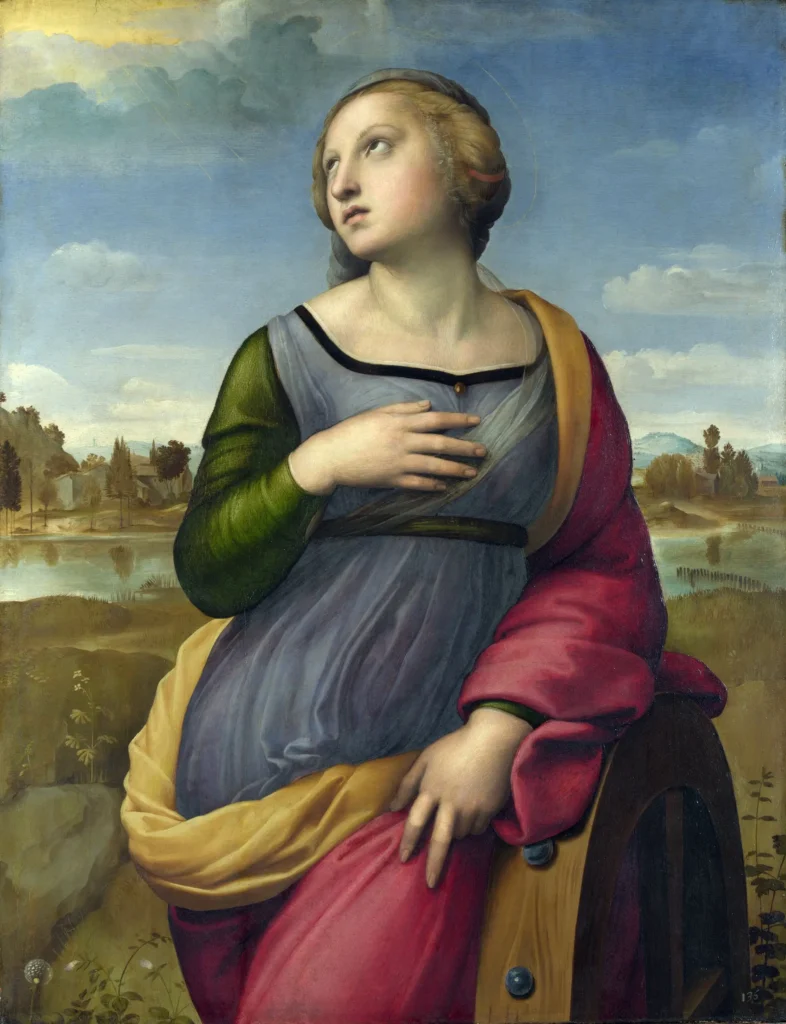
The famous oil paintings of the Renaissance represent the pinnacle achievement of European oil painting art. Through their exploration of human anatomy, perspective, light and shadow processing and other techniques, artists of this period greatly enriched the expressive power of oil painting, providing valuable experience and inspiration for artists of later generations. The masterpieces of art masters such as Leonardo da Vinci, Michelangelo, and Raphael not only have an important position in the history of art, but also have far-reaching influence on the development of art in later generations.
The oil paintings of the Renaissance not only influenced the artists of later generations in terms of technique, but also had a profound impact on the artistic concepts of later generations. The Renaissance humanist ideas, the importance of individual values, and the concern for real life have all had an important impact on the development of art in later generations.
The famous oil paintings of the Renaissance are the valuable heritage of human civilization, they not only show the charm of art, but also reflect the social life and ideology and culture of the Renaissance. By studying these artistic masterpieces, we can better understand the history and culture of the Renaissance, as well as better appreciate and understand the charm of art.


